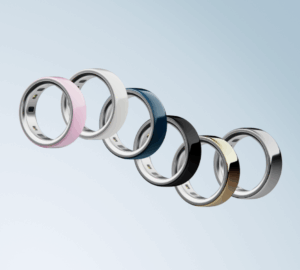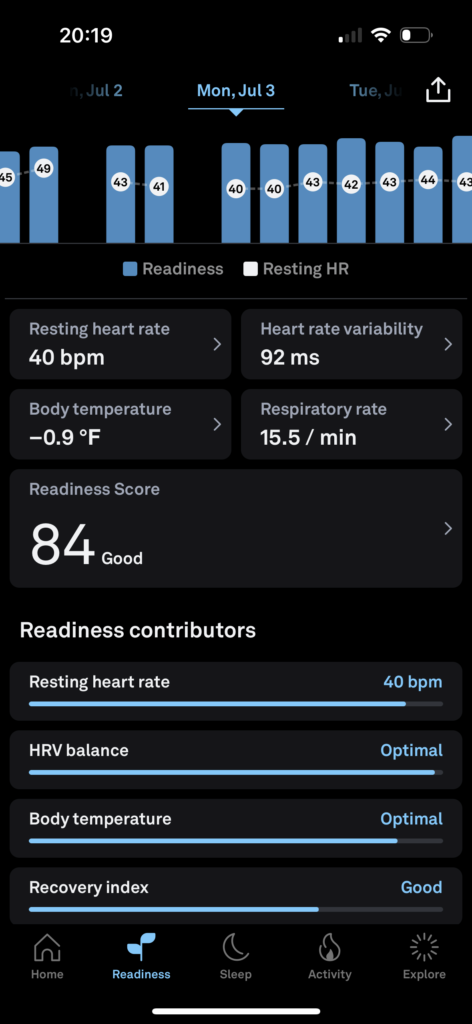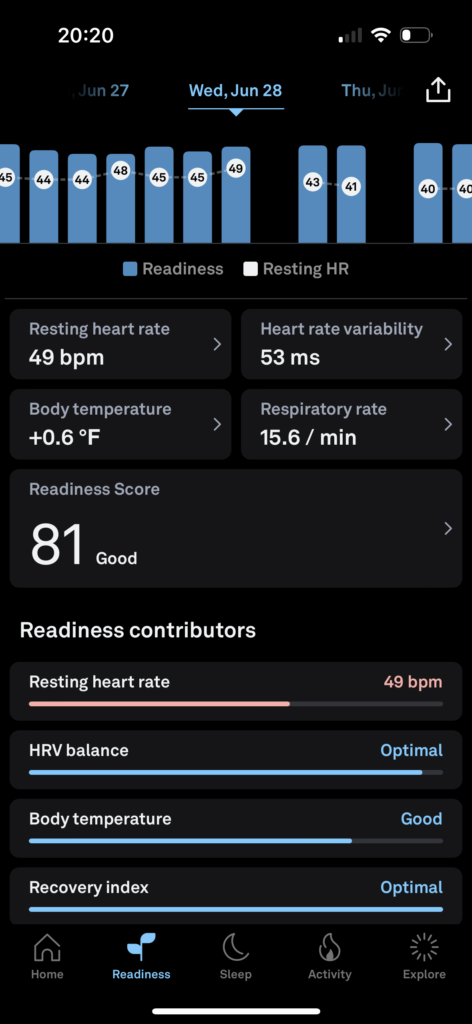Who: Maris J., Activity Product Manager, San Diego, CA
Surprising Oura insight: After using Oura for two marathon training cycles, Maris discovered changes in her performance were correlated with her hormone cycle. Approximately one week a month, Maris’ resting heart rate (RHR) increases about 10bpm, on these days she also had trouble hitting paces during workouts. With Oura, Maris is able to better plan and adjust her mindset heading into workouts.
What led you to Oura?
Before I started working at Oura, I was an Oura member. Oura helped me solve an eight-year struggle with insomnia. Being able to sleep transformed my life. Since owning the ring, Oura has, and continues to be, the most important tool in my toolbox for my physical and emotional health.
How were you able to overcome insomnia using Oura?
Oura allowed me to correlate my behaviors with my Sleep Score. I use the Tags feature to capture any self-experimentation and love looking back at my trends to see what has helped me sleep well.
Some of my unlocks for great sleep:
- Caffeine after 10am will disturb my sleep
- A high-protein, low-sugar diet helps me avoid that dreaded 3am wakeup
- Magnesium bis-glycinate and ashwagandha help me have uninterrupted sleep after a long training day
- Morning sunlight exposure
- Consistent meal timing
- Consistent bedtimes
These things not only improve my sleep; they also increase my energy and focus during the day, and I’m able to avoid a 3pm dip in motivation.
READ MORE: 5 Ways to Upgrade Your Sleep Hygiene
Tell us about your work at Oura.
I’m a Product Lead for Activity at Oura. Within Activity at Oura, there’s a deep commitment to support all movement types, whether that’s specialized sports training, walking, housework, or childcare. I feel a great sense of mission and purpose in my role to create an inclusive experience so that every single member is recognized and rewarded for their unique movement patterns.
When I joined Oura, we adopted an unofficial-official team motto: All Movement Counts. This motto underpins our foundational belief: Finding a home in Oura’s activity features and being active doesn’t mean that anyone has to train (or run at all, for that matter!) for their movement to count.
With Oura’s Automatic Activity Detection feature, members can track all of their movement — including yard work and washing the car! And we have big plans to expand this capability in the future.
READ MORE: Oura Introduces Two New Personalized Activity Features
What have you learned about yourself and the role movement plays in your life since working at Oura?
First and foremost, I have learned so much from my Finnish teammates, specifically how to prioritize movement year-round. I consider myself fairly resilient but have grown a tremendous amount seeing how my teammates get outside during the Finnish winter and in all conditions!
RELATED: 8 Secrets from Finland to Stay Happy and Healthy This Winter
I’ve also learned I thrive with connection and community. In my run group, we’ve had pregnancies, injuries, and work deadlines that sometimes keep teammates from meeting up for a run. Thankfully, we are all part of an Oura Circle, so we can still generate community because of Oura. We like to brag about our high Activity Scores by meeting our daily Activity Goal and moving every hour!
Finally, I also know that it is an absolute privilege to feel safe in an outdoors environment to spend time outside doing any type of movement. Plus, access to gyms, studios, etc. — i.e., places that are “more safe” — have a high financial barrier to entry.
How does Oura play a role in your training?
Oura gives me a regular, quantitative capture of where I am. This allows me to correlate the impact of my training, menstrual cycle, work stress, and the occasional cocktail on my overall health.
One thing I’ve realized is that movement helps me recover more quickly on rest days. When I walk on my days off, my resting heart rate (RHR) and higher heart rate variability (HRV) go back to baseline more quickly. Before seeing this in data, I would be almost sedentary on my rest days!
As an everyday female athlete, how does your menstrual cycle impact your training?
One of the biggest things I’ve learned is about the impact of my menstrual cycle on my performance. Before Oura, I had zero understanding of this. Now, I understand this impact, and more importantly, I can plan for it. It’s also helped me approach workouts in my luteal phase with a different mindset.
I feel like a different athlete in the luteal phase – specifically, the five days or so leading up to my period. Oura has helped me finally understand why. My Readiness metrics look like a different person! My RHR increases (sometimes by almost 10 bpm), and my HRV tanks.
I ran two marathons last year and my period started the day before both races. It can be common to hear: “Oh, that’s good, you’re in your follicular phase and will have a lower RHR and higher HRV.” But that was only true for one of my races. In the other I felt terrible and struggled with GI issues and cramps the entire race.
The reality is, a marathon date waits for no one and these things happen but I can reframe my mindset: I may not feel sharp or hit my normal pace, but I have some big running goals this year and losing my hormone cycle could be a signal of RED-S or, Relative Energy Deficiency in Sport, which is an extremely serious condition that would absolutely require me to take a step back from training. And so, I remind myself my hormone cycle is a sign of health, and I’ve done a great job nourishing my body!
RELATED: How to Align Your Training With Your Menstrual Cycle
What’s Your Oura Story?
Everyone’s story is unique, and we’d love to hear yours. Share your story here.












